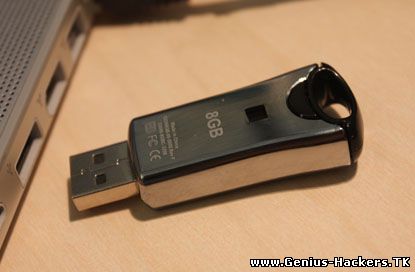
1. Format Your USB Key
Plug in your USB key and back up any existing data stored on it. You’ll need to format the key before you can make it a bootable device. Open up a Command Prompt as an Administrator. You can do this by finding the cmd.exe in yoru Windows/System32 folder, right-clicking the executable, and selecting "Run as Administrator”. Alternatively, type CMD in the Start Menu search field and activate the Command Prompt usingCtrl + Shift + Enter. 
You should be under c:\Windows\system32 (assuming your Windows partition is the C drive). Type "diskpart” in the command line to enter the Disk Partition command line tool, which lets you format and create partitions on active disks. Type "list disk” to reveal a list of all your active disks, each of which is associated with a number. Make a note of which one is your USB key, based on the capacity. In our screenshot below, our USB drive is Disk 6 (8GB). 
Next, type the following commands, one at a time: Select Disk # (Where # is the number of your USB disk. We typed "Select Disk 6”) Clean (removes any existing partitions from the USB disk, including any hidden sectors) Create Partition Primary (Creates a new primary partition with default parameters) Select Partition 1 (Focus on the newly created partition) Active (Sets the in-focus partition to active, informing the disk firmware that this is a valid system partition) Format FS=NTFS (Formats the partition with the NTFS file system. This may take several minutes to complete, depending on the size of your USB key.) Assign (Gives the USB drive a Windows volume and next available drive letter, which you should write down. In our case, drive "L” was assigned.) Exit (Quits the DiskPart tool) 
2. Turn the USB Key into a Bootable DeviceInsert the Windows 7 install DVD into your drive, and view the files that it contains. Copy all of the files here to a folder on your Desktop. We put the disc contents in a folder named "Windows 7” 
Go back to your command prompt, running it as an Administrator. Using the "CD” command, find your way to the folder where you extracted the ISO files. Your command line path should look something like "C:\Users\USERNAMEHERE\Desktop\Windows 7\”. Type the following commands: CD Boot (This gets you into the "boot” directory) Bootsect.exe /nt60 L: (where ‘L’ is the drive letter assigned to your USB key from the previous step) Bootsect infuses boot manager compatible code into your USB key to make it a bootable device. IMPORTANT: If you’re currently running 32-bit Windows Vista or 7, Bootsect will only work if you use the files from the 32-bit Windows 7 install disc. The Bootsect executable from the 64-bit version will not run in 32-bit Vista. 3. Load the USB Key Up with the Install Files  Copy all of the extracted ISO files into the USB drive. You don’t need to do this from the command prompt. Just drag and drop the files from the "Windows 7” folder into the drive using Windows Explorer. Your USB key is now all ready to go! Plug it into your target system and make sure you enter the BIOS (typically with F2 or F12) to temporarily change the boot order to allow booting from the USB key before your primary hard drive or optical drive. On the next restart, your system should automatically begin speedily loading setup files off of the USB key and entering Windows 7 installation. 
| 

